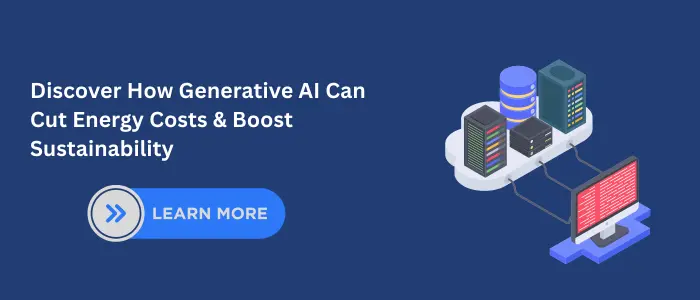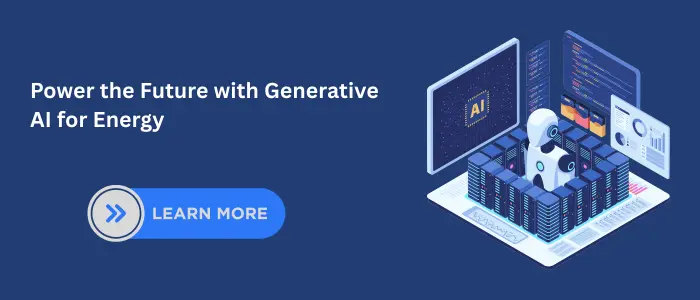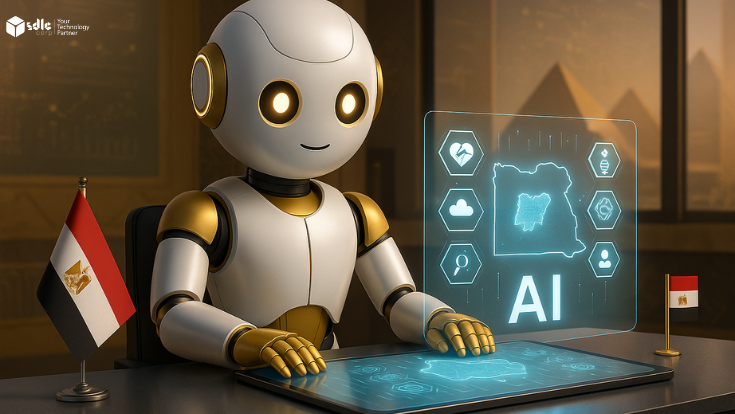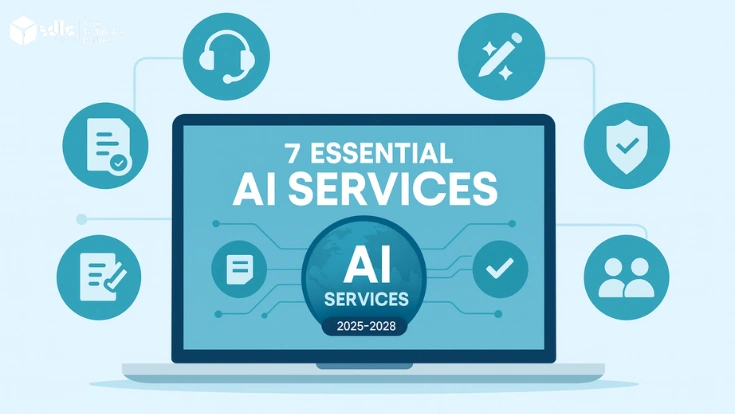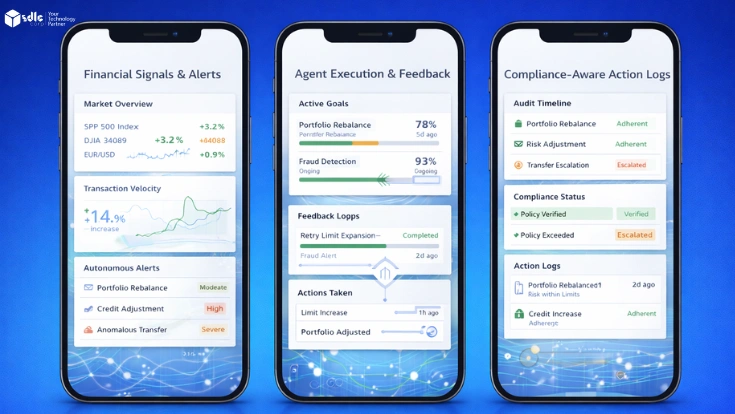Introduction
Moreover, the global energy sector is under intense pressure to transform. Consequently, governments, businesses, and consumers demand affordable, reliable, and sustainable energy solutions. Furthermore, climate change accelerates urgency, forcing innovation across every level of the industry. Therefore, energy providers must balance cost, demand, and environmental goals simultaneously.
In addition, generative AI has emerged as a revolutionary force in this landscape. Moreover, unlike traditional AI that only analyzes existing data, generative AI creates fresh models and strategies. Consequently, it not only forecasts outcomes but also generates optimized solutions for complex challenges. Ultimately, this technology is already reshaping how energy systems are designed and managed worldwide.
Role of Generative AI in Energy Systems
Energy systems generate data across generation, transmission, distribution, and consumption. Generative AI can support these systems by summarising operational reports, analysing maintenance records, and assisting with internal knowledge management. Many organisations explore Generative AI development services to build models that work with energy data while supporting reliability and system oversight.
1.Understanding Generative AI in Energy
Furthermore, what is generative AI uses machine learning models that generate new data or designs. Moreover, it identifies unseen patterns, proposes efficient solutions, and accelerates discovery across industries. Consequently, in the energy sector, it creates smarter grid layouts, optimizes storage materials, and simulates renewable performance. Therefore, it serves as both analyst and innovator.

Core uses of generative AI in energy include:
- Designing sustainable grid architectures
- Forecasting demand more accurately
- Innovating energy storage materials
- Simulating renewable energy production
In addition, generative AI empowers organizations to test scenarios before major investments. Moreover, risks reduce dramatically when strategies are validated virtually. Consequently, companies save money while embracing sustainability. Ultimately, businesses position themselves as leaders in the global clean energy transition.
2.Designing Smarter Energy Grids
Moreover, electricity grids face increasing pressure from urbanization and renewable integration. Consequently, traditional infrastructure struggles to deliver uninterrupted power during high demand. Furthermore, generative AI simulates failures before they happen, strengthening system resilience. Therefore, operators prevent blackouts with proactive strategies.
Benefits of generative AI in grid design include:
- Predicting demand surges with accuracy
- Designing layouts that integrate renewables
- Creating adaptive recovery systems
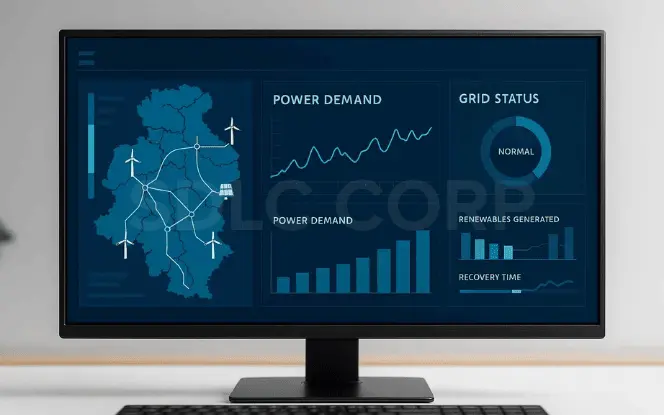
In addition, predictive models reduce downtime during disruptions. Moreover, utilities prepare long-term expansion strategies that adapt to population growth. Consequently, energy delivery becomes reliable even under stress. Ultimately, smarter grids supported by AI enable nations to expand sustainably.
3.Optimizing Renewable Energy
Nevertheless, renewable energy remains inconsistent because of weather unpredictability. Consequently, energy planners face challenges balancing supply with fluctuating output. Furthermore, generative AI leverages satellite data and weather models to forecast renewable performance. Therefore, solar and wind resources become easier to integrate.
AI strengthens renewables by:
- Forecasting availability of solar and wind
- Designing efficient turbine and panel structures
- Generating advanced storage strategies
In addition, AI accelerates design processes by running thousands of simulations. Moreover, renewable developers reduce experimentation costs and increase efficiency. Consequently, renewable adoption grows at scale. Ultimately, generative AI ensures clean energy competes with fossil fuels effectively.
4.Energy Storage and Battery Innovation

Moreover, energy storage is essential for renewable integration. Consequently, without reliable storage, clean power fails to meet consistent demand. Furthermore, generative AI simulates chemical compositions to create better batteries. Therefore, material discovery accelerates, saving time and money.
AI supports energy storage by:
- Simulating compounds virtually
- Predicting battery safety and lifecycle
- Improving density and performance
In addition, AI helps manufacturers design recycling strategies for used batteries. Moreover, predictive models optimize performance in diverse conditions. Consequently, storage solutions become safer and more durable. Ultimately, AI advances global battery innovation, powering renewable growth.
5.Enhancing Oil and Gas Exploration
However, oil and gas still remain part of today’s global energy mix. Consequently, companies require safer and cleaner approaches. Furthermore, generative AI analyzes seismic data to create precise subsurface models. Therefore, drilling becomes more accurate and less damaging.
AI applications for oil and gas include:
- Mapping underground resources
- Designing efficient drilling strategies
- Minimizing environmental harm
In addition, AI reduces costs while lowering ecological impact. Moreover, exploration becomes faster and safer. Consequently, companies maintain profitability while addressing sustainability expectations. Ultimately, AI helps fossil fuel industries modernize responsibly.
6.Reducing Energy Waste in Industries

Moreover, industrial operations waste significant energy. Consequently, inefficiencies inflate costs and emissions. Furthermore, generative AI detects wasteful processes through advanced simulations. Therefore, managers optimize energy use effectively.
AI industrial benefits include:
- Identifying inefficient processes
- Designing optimized workflows
- Reducing operational waste
In addition, AI validates potential improvements before real-world application. Moreover, risks decline as efficiency increases. Consequently, businesses achieve sustainability without sacrificing profitability. Ultimately, AI ensures industries reduce waste while supporting growth.
7.Powering Smart Cities
Furthermore, smart cities rely on integrated infrastructure to function sustainably. Consequently, electricity management must adapt dynamically to urban demands. Moreover, generative AI predicts consumption patterns for communities accurately. Therefore, planners design efficient energy systems.
Generative AI in smart cities enables:
- Forecasting daily demand precisely
- Optimizing transport-related energy
- Designing adaptive lighting systems
In addition, AI integrates renewable energy seamlessly into city frameworks. Moreover, resilience improves against unexpected disruptions. Consequently, smart cities achieve sustainability and growth simultaneously. Ultimately, AI supports the future of urban living.
8.Demand Forecasting for Utilities
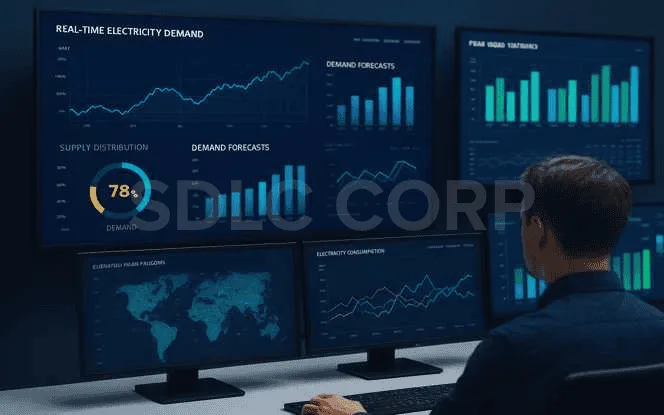
Nevertheless, utilities often struggle with unpredictable demand. Consequently, planning errors result in inefficiencies and outages. Furthermore, generative AI creates accurate demand forecasts, both short-term and seasonal. Therefore, providers align supply with demand.
Forecasting benefits include:
- Accurate real-time predictions
- Seasonal consumption models
- Optimized supply distribution
In addition, predictive models minimize reliance on costly backup systems. Moreover, outages decline significantly. Consequently, consumer trust improves. Ultimately, AI transforms utility management into a more reliable service.
9.Lowering Energy Costs for Consumers
Moreover, households worldwide face rising energy expenses. Consequently, affordability becomes a major concern. Furthermore, generative AI produces personalized energy-saving recommendations. Therefore, consumers gain control over expenses.
AI helps consumers by:
- Offering custom savings tips
- Scheduling appliance usage smartly
- Reducing energy bills
In addition, AI powers smart home assistants that guide behavior. Moreover, savings combine with environmental benefits. Consequently, families adopt renewables confidently. Ultimately, AI enables affordable and sustainable lifestyles.
10.Grid Resilience Against Climate Change
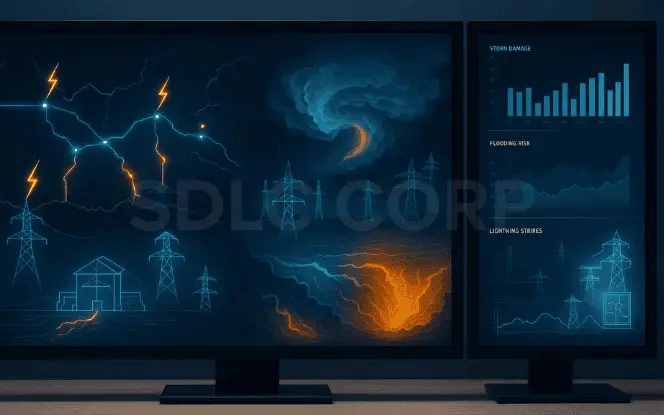
However, climate change intensifies extreme weather events. Consequently, infrastructure faces greater vulnerability. Furthermore, generative AI simulates disaster impacts to design recovery plans. Therefore, resilience improves significantly.
AI strengthens resilience by:
- Simulating climate-related disasters
- Creating rapid response strategies
- Reducing downtime during outages
In addition, predictive models accelerate repair operations. Moreover, restoration timelines shorten. Consequently, societies remain connected during emergencies. Ultimately, AI safeguards energy security against climate risks.
11.Supporting Hydrogen Energy Development
Moreover, hydrogen is a promising clean fuel alternative. Consequently, production efficiency and cost remain challenges. Furthermore, generative AI identifies catalysts to improve hydrogen production. Therefore, adoption becomes scalable.
AI drives hydrogen progress through:
- Discovering efficient catalysts
- Optimizing industrial production
- Lowering operational costs
In addition, AI designs strategies for large-scale hydrogen integration. Moreover, global investments grow stronger. Consequently, hydrogen advances as a clean solution. Ultimately, AI accelerates the hydrogen revolution.
12.Accelerating Carbon Capture Solutions
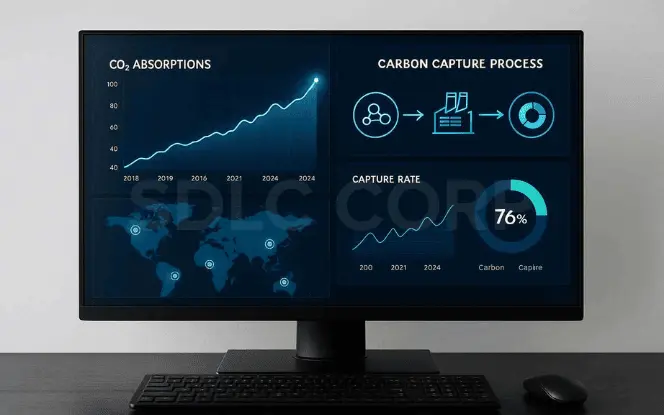
Nevertheless, global industries continue emitting large amounts of carbon. Consequently, carbon capture remains essential. Furthermore, generative AI develops advanced absorbents and system layouts. Therefore, capture becomes more effective.
AI supports carbon capture by:
- Improving CO₂ absorbents
- Designing efficient layouts
- Reducing capture costs
In addition, simulations accelerate technology deployment. Moreover, adoption becomes more cost-effective. Consequently, carbon reduction efforts scale across industries. Ultimately, AI strengthens climate action strategies.
13.Improving Nuclear Energy Safety
However, nuclear energy faces skepticism about safety. Consequently, adoption remains limited. Furthermore, generative AI simulates reactor responses to extreme conditions. Therefore, protocols improve significantly.
AI improves nuclear safety through:
- Stress-testing reactors virtually
- Designing emergency strategies
- Creating safer operation protocols
In addition, predictive models reduce accident risks. Moreover, public trust improves gradually. Consequently, nuclear adoption increases as confidence grows. Ultimately, AI helps nuclear contribute safely to clean energy.
14.Workforce Training and Safety

Moreover, workforce readiness is crucial for safe energy operations. Consequently, training demands innovative solutions. Furthermore, generative AI creates immersive simulations for workers. Therefore, preparation improves.
AI enhances workforce training by:
- Creating simulation-based programs
- Generating personalized safety manuals
- Reducing workplace risks
In addition, employees practice emergencies virtually. Moreover, readiness improves across facilities. Consequently, safety records strengthen. Ultimately, AI ensures trained professionals operate responsibly.
15.Policy and Regulation Support
Nevertheless, governments face pressure to enforce sustainable policies. Consequently, poor decisions risk delays. Furthermore, generative AI simulates potential outcomes before regulations are enacted. Therefore, policymakers gain clarity.
Policy-making benefits include:
- Transparent decision modeling
- Data-driven governance
- Climate-focused regulations
In addition, governments coordinate with industries confidently. Moreover, smoother adoption follows strong planning. Consequently, climate targets become achievable. Ultimately, AI supports effective governance.
16.Global Collaboration in Energy Transition

Moreover, energy transformation requires international partnerships. Consequently, knowledge sharing accelerates adoption. Furthermore, generative AI supports cross-border research and localized solutions. Therefore, global equity improves.
Collaboration benefits include:
- Sharing AI models globally
- Building localized energy systems
- Supporting equal adoption worldwide
In addition, developing countries gain access to advanced tools. Moreover, collaboration strengthens trust between nations. Consequently, the transition becomes unified. Ultimately, AI supports global energy solidarity.
17.Challenges and Limitations
However, challenges remain despite opportunities. Consequently, barriers slow widespread adoption. Furthermore, issues include costs, data limits, and overreliance risks. Therefore, careful integration is necessary.
Key challenges include:
High infrastructure expenses
Limited high-quality data
Over-dependence concerns
In addition, organizations must maintain oversight. Moreover, AI should complement rather than replace human judgment. Consequently, balanced use ensures responsible outcomes. Interestingly, many of these same issues also appear in Generative AI for Healthcare, showing that challenges are cross-industry. Ultimately, adoption requires accountability, collaboration, and trust to ensure long-term success.
18. Planning, Forecasting, and Decision Support
Energy planning requires accurate forecasting and careful evaluation of scenarios. Generative AI can help consolidate historical data, draft planning summaries, and support decision-making processes. In these situations, a Generative AI consulting company may assist in assessing suitable use cases, defining governance controls, and ensuring outputs are interpreted correctly.
19. Integration with Existing Energy Platforms
Generative AI tools often complement predictive analytics, monitoring systems, and automation tools already in use. Integrating these components requires stable infrastructure and clear data pipelines. Energy providers may rely on AI development services to connect generative models with existing platforms while maintaining system performance and data integrity.
Conclusion
Hence, generative AI is revolutionizing the energy sector. Further, it maximizes efficiency, enhances resilience, and reduces cost. Additionally, it enables renewable expansion. As a result, industries and consumers reap rewards.
Eventually, there are challenges, but opportunities are larger. Hence, generative AI needs to be embraced. Further, it guarantees clean, cheap, and resilient energy systems. As a result, succeeding generations have a cleaner world to leave behind.
If you’re ready to implement these innovations, consider hire generative AI developers to build and scale energy-focused AI solutions.
FAQ'S
What is generative AI in energy?
Generative AI in energy refers to advanced algorithms that can create new designs, strategies, and models rather than just analyzing past data. It enables engineers to simulate energy systems, test thousands of scenarios virtually, and discover innovative solutions for efficiency and sustainability. Moreover, it helps in grid optimization, storage material discovery, and renewable energy forecasting. Ultimately, it transforms the energy sector from reactive to proactive problem-solving.
How does AI support renewables?
AI supports renewables by forecasting energy production from solar, wind, and hydro systems with high accuracy. Furthermore, it designs efficient infrastructure such as smarter turbines, panels, and inverters to maximize generation. It also develops advanced energy storage solutions, ensuring renewables remain reliable even when weather conditions fluctuate. In addition, generative AI reduces costs by optimizing site selection and long-term planning. Consequently, renewables become more competitive with fossil fuels globally.
Can consumers benefit directly?
Yes, consumers directly benefit from AI in several ways. Generative AI provides personalized energy-saving recommendations, such as appliance scheduling and optimized home heating or cooling. Moreover, it powers smart home assistants that automatically adjust energy use to lower bills without reducing comfort. In addition, AI integrates with home-based solar panels and battery systems, enabling consumers to store excess energy efficiently. Ultimately, households save money, reduce emissions, and gain energy independence.
What role does AI play in resilience?
AI strengthens resilience by simulating the impact of natural disasters and extreme climate events on energy infrastructure. Furthermore, it creates recovery strategies that help utilities prepare in advance. It models scenarios like storms, floods, and heatwaves to predict failures and design rapid responses. In addition, AI ensures grids adapt quickly, reducing downtime during crises. Consequently, energy providers maintain stability, and societies remain connected even under severe environmental stress.
What limits adoption today?
Adoption of generative AI in energy faces several limitations. High implementation costs remain a barrier for smaller companies and developing nations. Moreover, limited access to high-quality, real-time data slows accuracy and innovation. In addition, there are concerns about overreliance on AI systems without adequate human oversight. Issues related to cybersecurity and regulatory uncertainty also pose risks. Ultimately, overcoming these barriers requires collaboration between governments, technology firms, and energy providers to ensure safe and equitable adoption.

